Compassion and the Tennessee Maneuvers
World War II history has been of special interest to our family because Ray’s dad, Wesley Notgrass, served in the U.S. Army from 1941 to 1945. His mother, Joan (who was from Bristol, England), served in the British Auxiliary Territorial Service (as did future queen Elizabeth II). Ray’s dad landed in Normandy, France, the day after D-Day and was in every major Allied campaign until the Allied victory in Europe. After the 1st Army reached Germany, Wes flew back to England to marry Joan Kathleen May Clark. Here they are, both in their uniforms, while on their honeymoon on the beach in Weston-Super-Mare.
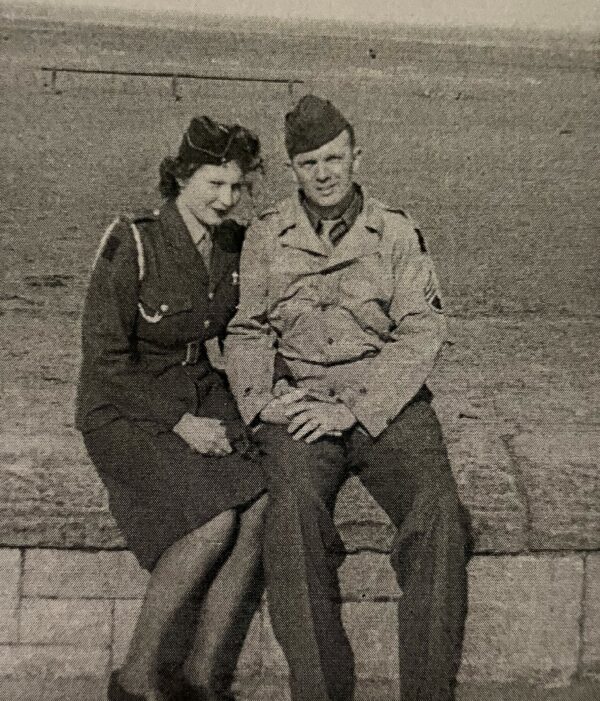
Last night I took this photo of her uniform.

Here is her name, written inside.
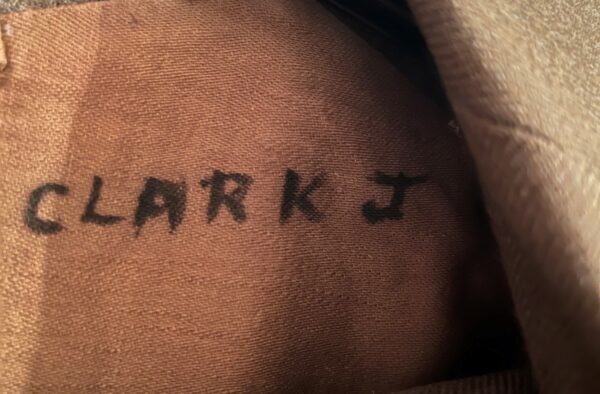
After the honeymoon, Wes flew back to Germany on an Army cargo plane. His seat was a case of horseradish on its way to General Dwight D. Eisenhower. Granddaddy Wes used to say that if the cargo on the plane was found to be too heavy, he would have to get off and he would have been outranked by a case of horseradish.
Joan’s maternal grandfather lived with her family. He deeply appreciated Wes and the other American soldiers who came to Europe to fight with the Allies. When Wes would go to visit Joan’s family, Grandfather Jefferson, who was almost blind, would ask, “Is this one of our gallant defenders?”
Before those gallant American defenders could defeat Hitler, they had to train in the U.S. Wes trained at various Army bases in the East before being assigned to Governor’s Island in New York Harbor. He worked there until the time came for him to sail across the Atlantic to England along with thousands of other U.S. soldiers.
Other soldiers—around 850,000 of them—got part of their training here in Middle Tennessee. The Army decided that Middle Tennessee would be an effective training ground because the terrain is similar to Europe and our beautiful Cumberland River is similar to the Rhine River in Germany. This training, known as the Tennessee Maneuvers, occurred in 21 Tennessee counties, including Jackson County where Ray and I live now.

I took this photo of the Cumberland River
in my hometown of Ashland City.
You can see the Cumberland River twisting its way across this giant Tennessee Maneuvers map.
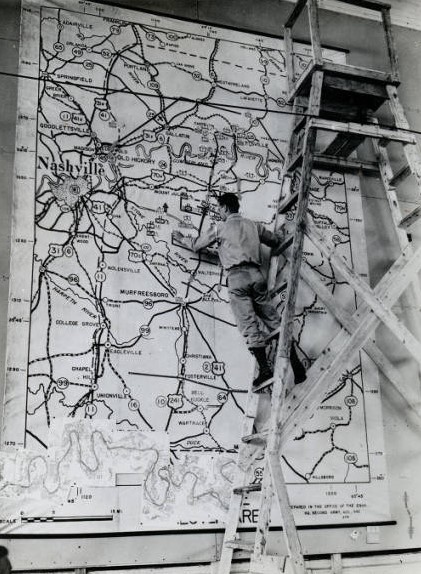
Tennessee Maneuvers Map, 1941
Credit: Property of the Albert Gore Research Center,
Middle Tennessee State University.
The Army sent letters to area farmers ahead of time asking them to allow soldiers to enter their land, maneuver on it, cross over it, and camp on it. The letters also told the farmers that they would be reimbursed for damages. Local people welcomed the soldiers and appreciated the opportunity to help with the war effort.
Soldiers were divided into a red army and a blue army who practiced fighting each other while officers served as umpires.

Camouflaged against enemy aircraft and guarding
against attacking forces of the Second Army
on maneuvers in Middle Tennessee,
this 155 mm rifle points its elongated barrel
through a tree as it is swung into position
by members of a field artillery battery.
Courtesy Library of Congress.

Soldiers of a reconnaissance squad on maneuvers
with the Second Army in Middle Tennessee
cutting across the country in a scout car.
Courtesy Library of Congress.
Planes dropped flour bombs onto small towns.
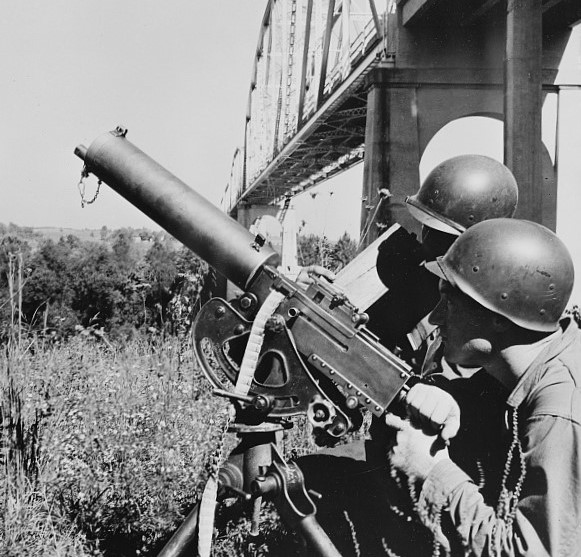
On the alert against attacking planes
is this heavy machine gun crew,
their weapon set up near a vital bridge
in the Second Army’s Middle Tennessee maneuver area.
The bridge was attacked three times
by fast-striking dive bombers
during a phase of the maneuvers.
Courtesy Library of Congress.
Military convoys stretched for miles on highways. Tanks tore through farmers’ fences and crawled through small town streets as General George S. Patton perfected the tank tactics he would soon use so successfully in Europe.
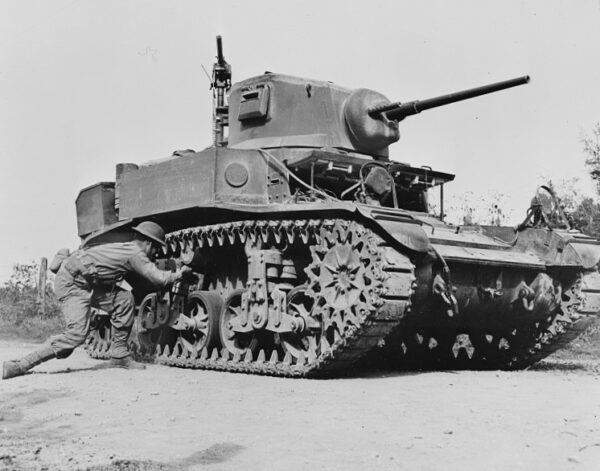
A young sergeant from North Carolina
stalks a tank on maneuvers with the Second Army
in Middle Tennessee. Courtesy Library of Congress.

An armored half-track vehicle
belonging to a medical unit fording the river
during the Second Army’s Middle Tennessee Maneuvers.
Courtesy Library of Congress.
Smith County with its county seat of Carthage is adjacent to our Jackson County. Tennessee Maneuvers occurred in Carthage and Smith County, including a mock battle on the street in front of the Smith County Courthouse! This past Saturday Ray and I, along with our younger daughter and their five children, attended the WWII Tennessee Maneuvers Remembered festival in Carthage. It was fabulous. If you are interested in attending next year, set aside May 10-11.

World War II collectors displayed artifacts from the time period. Mr. Jeff Campbell, standing here with Ray, collected items related to communication.
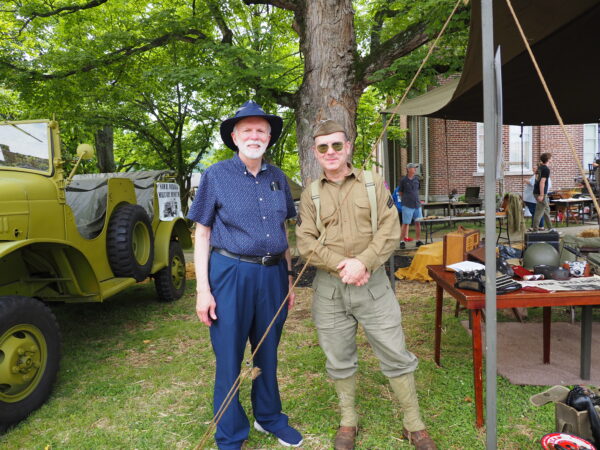
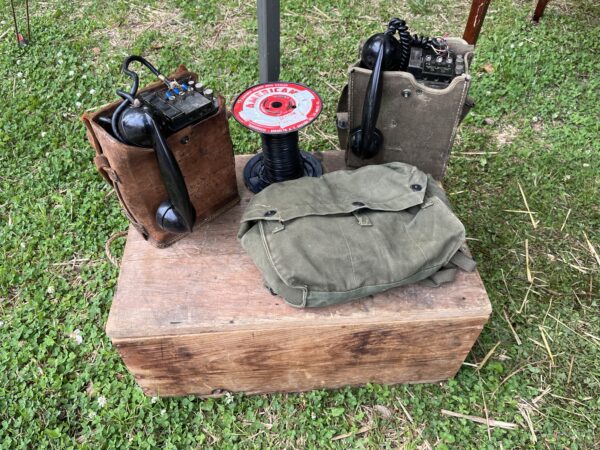
The biplane flyover over downtown Carthage was thrilling.
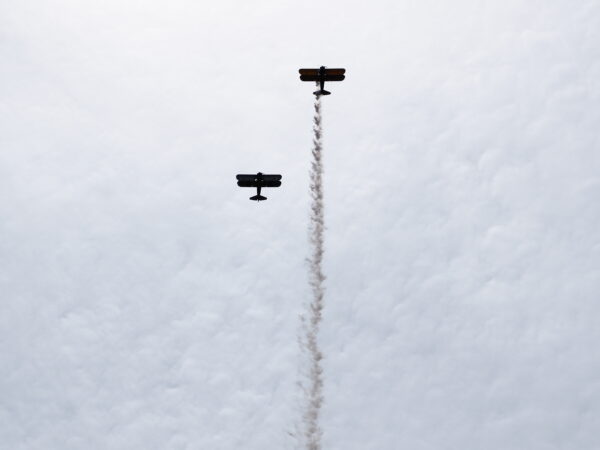
So was the reenactment of a battle on the same street in front of the courthouse, where such a battle occurred during the Tennessee Maneuvers.
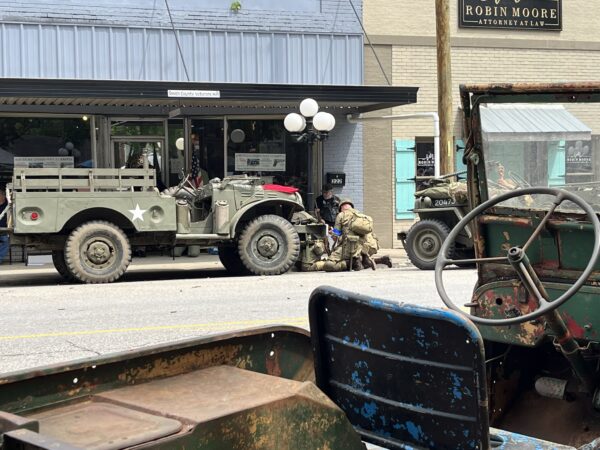
These ladies sang the popular Andrews Sisters hit, “Boogie Woogie Bugle Boy,” on the porch of the courthouse.
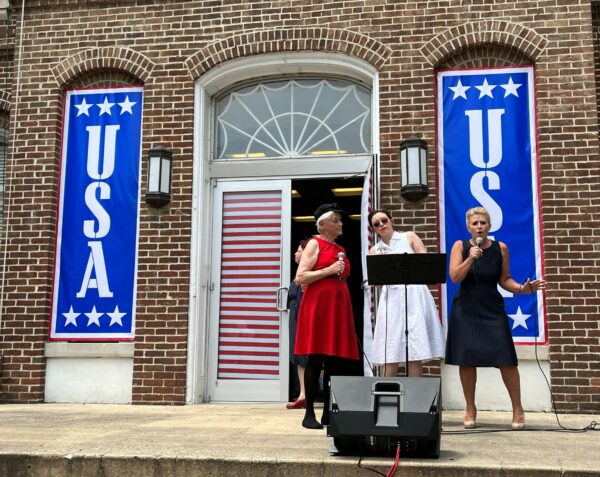
I have many photos and stories to share with you over the coming days, but today I want to tell you about this lovely lady.
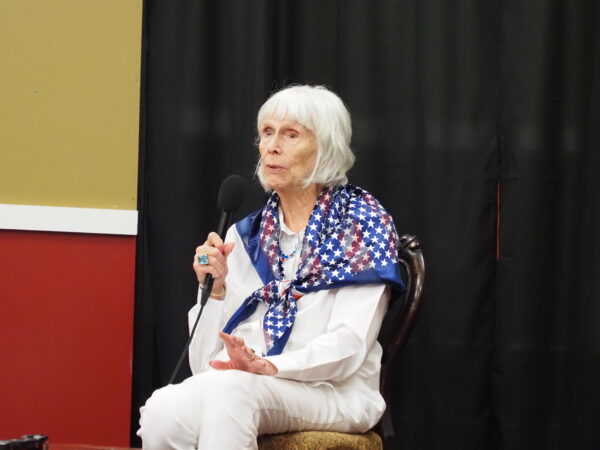
A highlight of the festival for Ray and me was hearing people who were children during the maneuvers share their memories inside the courthouse. I was particularly touched by this lady’s stories. She was born and raised in Carthage and is now nearing ninety years old. She came to the festival from her home in New Mexico. As you see, she wore patriotic attire. I’m sorry you can’t see her adorable red sequined shoes with laces.
She told wonderful stories, speaking with deep emotion about her appreciation for the U.S. soldiers. She reminded us of their great sacrifices and the importance of what they did for us. She wondered about soldiers who were in Carthage during the maneuvers and who perhaps lost their lives while they were serving in Europe.
Her father was a veteran of World War I. His heart went out to the soldiers, so he brought many to their home for a home-cooked meal. She told about how these were young men of 18, 19, or 20, some of whom had never been away from home before. Her father sat and talked with some of them until late in the evening.
These soldiers were practicing for war and many accidents happened. I plan to share more of her stories later, but I’d like to tell you one of them today.
Once, when soldiers were building a pontoon bridge across the Cumberland River, the bridge collapsed. One soldier drowned, and many had to be rescued from the river. Her parents welcomed rescued soldiers into their home that evening. Soldier after soldier took a bath in the family’s tub. When the hot water ran out, her mother heated water on the stove. Finally it got late, and her mother sent her to bed. The next morning she awoke to find sleeping soldiers covering the living room and dining room floors.
Her father knew what it was like to be a U.S. soldier in a war far away, and he felt compassion for these young soldiers. This is the attitude that God wants us to have for strangers. What a blessing it was for her to see that lived out in her father and mother.
Compassion for strangers is near to God’s heart. God has made us so that we need other people. In many ways, a stranger is someone who feels like an outsider. Because they don’t have their “other people” yet, they feel outside the group. Feeling like an outsider can be a very lonely and discouraging feeling. Children need adults to help them develop compassionate hearts for those who feel that way for whatever reason.
The Israelites had been aliens in the land of Egypt. They knew what it felt like to be outsiders. God wanted them to remember that and to treat the strangers in their land differently from how they had been treated in Egypt. God taught them:
When a stranger resides with you in your land,
you shall not do him wrong.
The stranger who resides with you
shall be to you as the native among you,
and you shall love him as yourself,
for you were aliens in the land of Egypt;
I am the Lord your God.
Leviticus 19:33-34

